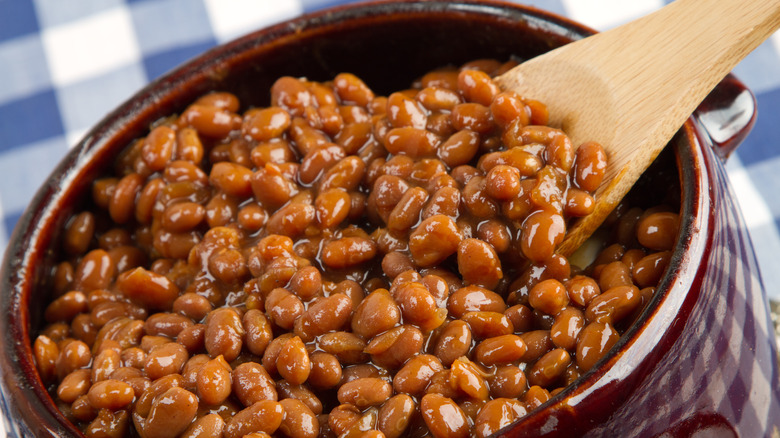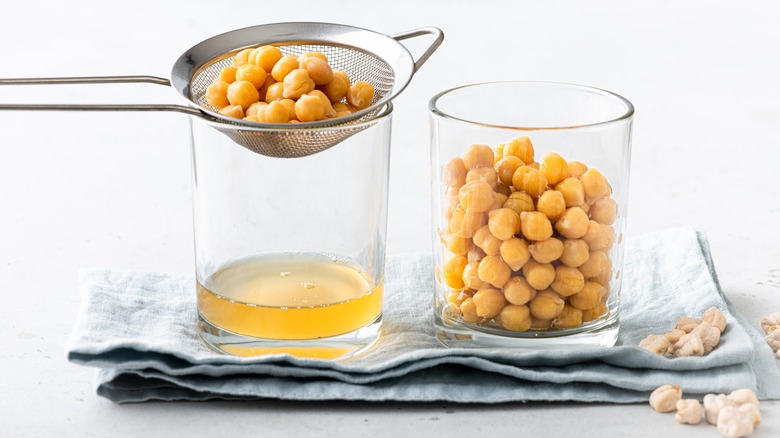For Richer Homemade Pork And Beans, Don't Drain Your Canned Goods
Nineties alternative band Weezer famously equated pork and beans with self-actualization and brazen adolescent confidence. But, before the "Red Album" rocked the radio waves in 2008, the humble dish that inspired the anthem was already enjoying a ravenous fanbase of its own. In Ian Fleming's "Dr. No," James Bond searches for clues in a pile of "debris and Quarrel unearthed a couple of unopened tins of Heinz pork and beans." During WWII, the U.K.'s Ministry of Food classified canned Heinz beans as an "essential food" during rationing.
While brands like Van Camp's and Campbell's continue to serve this dish in a can, diehard fans will say there's nothing like homemade — and a thin sauce won't cut it. Classic pork and beans recipes are made from dried beans, and the thickening agent in the sauce comes from the natural starches that seep out of the beans as they hydrate. Today, modern cooks make their own recipes using canned beans. News flash: You might be dumping the most important ingredient down the drain.
For many fans, the most crave-able element of pork and beans is the velvety sauce with its complex, dimensional profile, simultaneously sweet, savory, salty, and smoky. But, its rich creaminess is just as important as its flavor. When you crack open your can of beans to whip up this warming comfort dish, hold onto the canning liquid.
It's all about the aquafaba
Bean canning liquid (aka aquafaba) forms when beans are soaked for an extended period of time, and with that in mind — dump that canning liquid into your cooking pot. Some of the thickness comes from the molasses, but clear, viscous aquafaba is so thick that it's often used as an egg substitute. It's even swapped for egg whites in many cocktails for vegan sippers. Plus, the ingredient is flavorless when cooked, so it won't impart any unwelcome taste onto your pork and beans.
It's easy to whip up a homemade version of the warming, stick-to-your-ribs comfort food with cured pork, molasses, and canned beans. Navy beans are traditional, but cannellini beans totally work here as well. As an added bonus, this is also a great way to use up leftover pulled pork. If you cook with canned beans regularly and want to set aside some of the aquafaba to use in a batch of pork and beans later on, it'll keep in an airtight container in the fridge for up to a week.
For dinner, pair your pork and beans with a glass of red wine or a steaming mug of coffee. It's the ultimate cozy dish for camping, especially enjoyed out of a steel mug and warmed over a fire. Thick, velvety pork and beans are also great for breakfast, ladled onto a thick piece of sourdough toast and topped with a fried egg.

